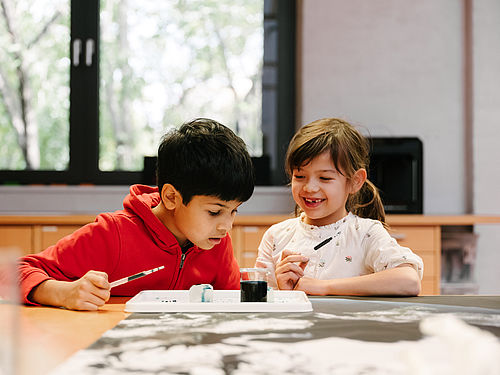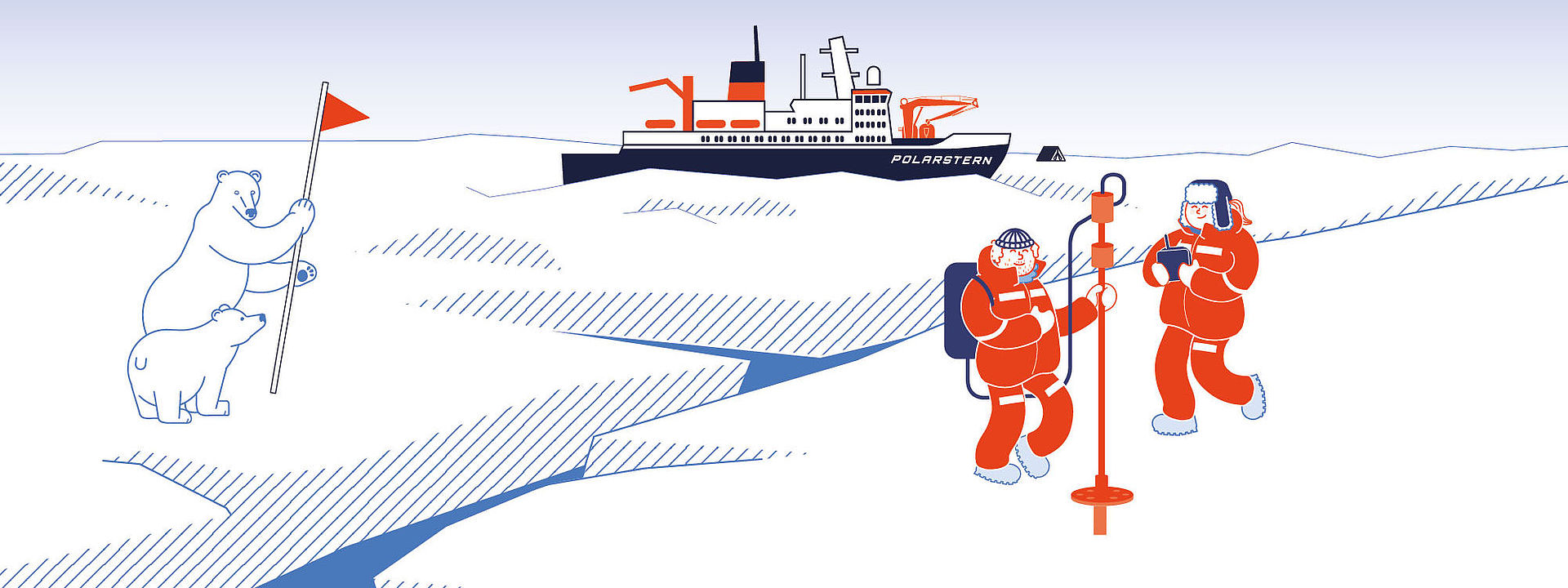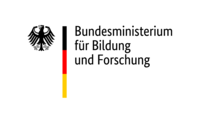Join us on a climate expedition!
Icy winds, freezing weather and months of darkness – the POLARSTERN’s expedition to the Arctic faced many perils. Starting in late 2019, the research ship drifted through the Arctic Ocean for more than a year. In what was a milestone for climate research, the team collected information on changes occurring in the Arctic climate.
The "Thin Ice" exhibition in the Ladestraße section of the Deutsches Technikmuseum takes visitors on a climate expedition. School classes and families can experience what it's like to do research in the Arctic. They can measure ice thickness, look for microorganisms and find out how much longer multiyear ice will still be around. That the Arctic serves as an early warning system becomes crystal clear. And the warning is unequivocal. There simply isn't much time left. We must act now to prevent a climate catastrophe.
View of the exhibition. Two eye-catching objects in the exhibition: the measuring balloon "Miss Piggy" (left) and the EM-Bird towed probe. The individual exhibition modules are located on "ice floes" in the room.
SDTB/ Foto: É. Hijano
Pupils are given tasks in the exhibition: for example, to measure the ice thickness of the floe and transfer the data to a research booklet.
SDTB/ Foto: É. Hijano
Visitors to the exhibition can try out for themselves what it feels like to sit on a motorized snowmobile.
SDTB/ Foto: É. Hijano
Climate change is particularly evident in the Arctic
The Climate Change that we humans have caused is the greatest challenge of our time. The Arctic has already been severely affected. Over the past decades, the Arctic ice cover has decreased dramatically: While around seven million square kilometers of ocean were still covered in ice in the 1980s, by 2022 it had shrunk to around 4.5 million square kilometers. If this trend continues, the Arctic will be practically ice-free during some summer months. Such a development would seriously impact the global climate and would have palpable repercussions for mankind as well.
However, in order to grasp the significance of such predictions, the status quo must first be understood. It was for this reason that the Alfred Wegener Institute's research vessel POLARSTERN set off on an expedition to the Arctic in the fall of 2019. The goal was to research the Arctic climate: Several research teams were tasked with collecting climate data over the course of a year. The first results are now available and clearly show that the climate in the Arctic has already changed significantly. But it is not yet too late. It was this final message that prompted the Deutsches Technikmuseum to make that expedition the subject of an exhibition aimed specifically at school classes and families. The message: there is still hope for both the Arctic and our own temperate climate, but only if society and politicians decide to act now. The exhibition correlates this declaration with the history of the expedition and the depiction of scientific research in an extreme environment.
This exhibition module makes the importance of the right - warm - clothing for a polar expedition tangible and tangible.
SDTB/ Foto: É. Hijano
How thick is the sea ice? At the research station, measuring instruments are explained that can be used to calculate the possible future of the sea ice.
SDTB/ Foto: É. Hijano
The expedition begins: visitors become researchers. They receive research diaries and pack their survival backpacks.
SDTB/ Foto: É. Hijano
Visitors on polar bear watch

SDTB/ Foto: É. Hijano
"Thin Ice" takes visitors on a climate expedition. They can immerse themselves in the world of Arctic expeditions and climate research and slip into the role of a researcher. Visitors board the POLARSTERN research vessel, find out about life on board and learn that it is the cold that poses the greatest risk. They learn that it is extremely complicated to screw together measuring instruments with thick polar gloves and are encouraged to grapple with the safety equipment and confront the danger of polar bears. One of the highlights of the exhibition is a self-built hut that provided the POLARSTERN's team of polar bear guards with shelter from the cold and wind. Its walls, which are scratched and scribbled like those of a school bathroom stall, are a lively part of the exciting impressions of the everyday life of polar guards.
In the second part of the exhibition, visitors leave the ship and enter the research camp. Five different research areas illustrate the technical effort and personnel required for the task of collecting data. Visitors learn which alarming theories regarding the climate and the impending climate catastrophe can be substantiated by the data. Thus the helium balloon nicknamed "Miss Piggy" measures the temperature above the Arctic, while the diving robots "Beast" and "Beauty" collect samples of microorganisms that live on the underside of the sea ice. Ice cores provide information about the history of the ice. The complex interrelationships underlying climate change thus become evident. And it also becomes clear that the Arctic has already been altered and is suffering enormously from climate change.
In the final part of the exhibition, visitors return to the ship with the realization that the research results speak for themselves: We are running out of time and must act now! The expedition's research team as well as many climate policy initiatives are here provided the chance to "have their say". The visitors, too, can express their feelings and are encouraged to nail their Climate Change theses on the wall.
Free accompanying program for school classes and families

SDTB/ Foto: É. Hijano
Visitors also have the opportunity to take on the role of researchers and, equipped with a research diary, can immerse themselves even more deeply in the exhibition. Knowledge, creativity and attentiveness are required here if you want to support science with your data!
In the free accompanying program, school classes and families can pursue the topic in greater depth: As part of "Mission Arctic", participants slip into the roles of Arctic researchers and collect important climate data. They examine ice cores, measure the thickness of the ice and investigate, among other things, currents under the ice as well as microorganisms.
The free programs can either be booked by school classes from grades 4 to 10 or they are open to families from the general public, mostly on weekends and during school holidays.
A podcast for children!

There is a wonderful podcast for children accompanying the exhibition (in German)!
Find out more here.
Ticket-cooperation with the Museum for Communication
With your ticket (full-paying) for Deutsches Technikmuseum you get a 4 euro discount for the "Klima_X" exhibition at the Museum of Communication! And vice versa. And with your ticket (full-paying) for the Museum of Communication you get a 2 euro discount for the Deutsches Technikmuseum.




